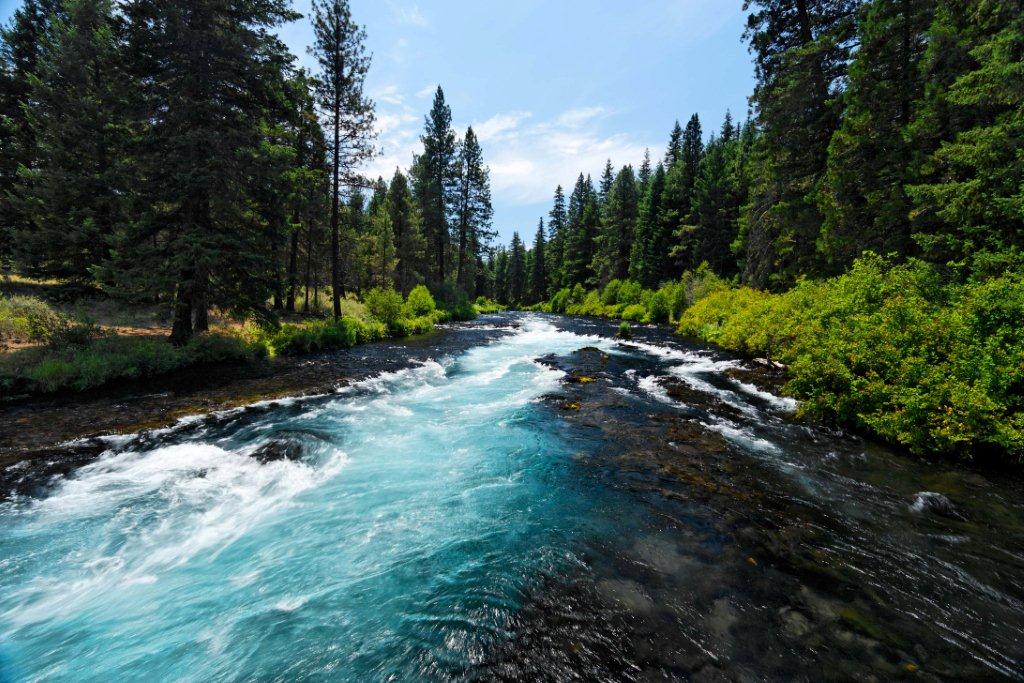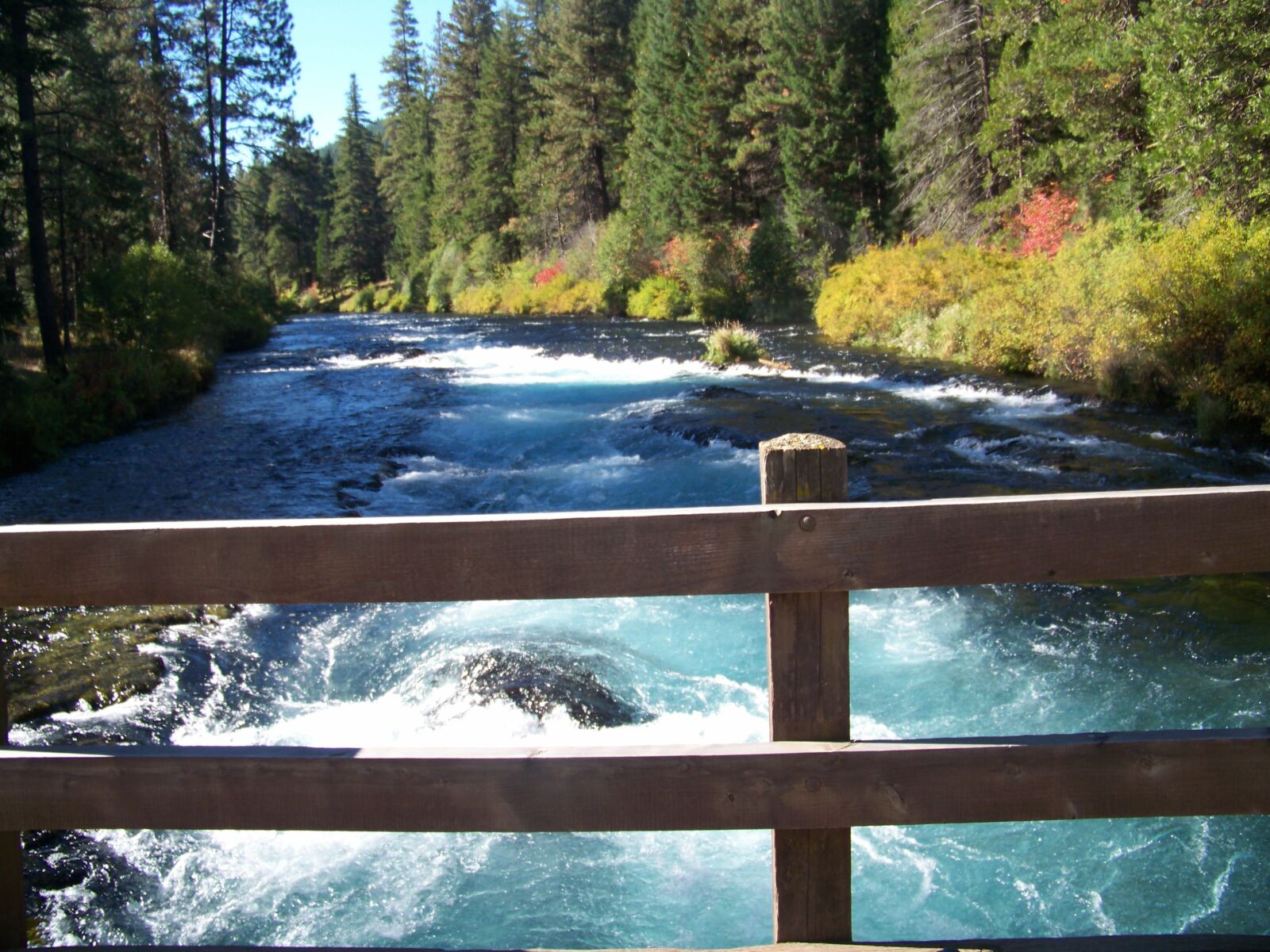
The project includes replacement of existing trail structures (bridges and rock structures), protection of erodible sites along the river by placing rock or wood to dissipate erosion and provide hardened sites for foot traffic, and planting native plants on exposed soils to reduce erosion and provide cover for fish habitat.
Conserving our Fisheries for Today and our Future
The Metolius River draws people from all over the country for its scenic beauty and world renowned fishing opportunities. Catching fish in the river can be quite difficult if you are not familiar with the spots fish hold or local timing of insect hatches. The river from the headwaters to Bridge 99 is fly fishing only and from Bridge 99 downstream it is artificial flies and lures. All fish must be released unharmed. Impact to the river banks and its riparian vegetation are quite evident from the headwaters to below Bridge 99.
Popular fishing spots have become especially devegetated and are sources of fine sediment inputs to the river. Historically, trail work to address these problems has been implemented sporadically and a new systematic restoration plan and stewardship network is needed. Last year the trail on the east side of the river below the Wizard Falls bridge was rerouted to move the trail away from the river’s edge and is now located on the bench above the river. Other reroutes, closures and hardening projects have taken place over the last 20 years. One project in the early 1990’s placed large stepping stones at several popular fishing access points. These still exist in several areas but some of them have failed and are no longer in place.

The Wild and Scenic River Management Plan for the Metolius River has specific standards and guidelines to preserve conditions and qualities of the river:
“The river trail and associated fishing access points are defined, hardened, replanted, relocated or closed where there are unacceptable impacts to riparian vegetation, streambanks, or water quality. Unacceptable impacts include devegetation beyond the normal tread width, loss of bank stability, Exposed tree roots, loss of over hanging bank structure, lack of trail definition or multiple parallel trails or point source erosion of siltation.”
Partners and Project Vision
As part of National Forest Foundation’s Treasured Landscapes Conservation Campaign, also called “ Tale of Two Rivers”, the Metolius River Trail Restoration Project will ultimately preserve the habitat and natural beauty of the Metolius River for generations to come. This will be accomplished by addressing the effects of overuse and misdirected use of trails and access to the river. Lead organizations for the project are Deschutes National Forest, Trout Unlimited, and the National Forest Foundation. Support partners include the Friends of Metolius and Central Oregon Flyfishers. The Camp Sherman and Metolius recreation community will benefit from improved fish habitat for anglers; defined access points to visit the water; and defined trail systems for all users. Improvements to the trail and riparian zone will ensure a healthy river corridor for local residents, visitors, fish and wildlife, and students using the area as a classroom.
Restoration Methods
- planting native species in impacted riparian and upland areas
- re‐routing trails to prevent harmful erosion and sedimentation
- defining trails and access using rocks and logs to reduce erosion
- hardening projects in order to stabilize eroded banks and steep grades
- moving certain parking areas to allow for restoration in overused sites
- road repair around bridges and parking areas to prevent run‐off
- identifying critically impacted areas and closing them for restoration
- installing informational kiosks for education about the project
- monitoring efforts both before and after restoration methods
Doing your Part for the River and Fish
Our main goal is protecting the river, the unique fisheries and the Metolius recreational experience for the long term. We will have volunteer opportunities throughout this project, working with staff and youth crews. To build a history of the river and to support our restoration design, we need folks who love to fish the Metolius, and have for decades, to provide input. Come join us in a focus group, where we walk a stretch of water and document conditions and recommendations. In addition, for all of us who love the Metolius, we will have work parties to chip in on trail work, plantings, and monitoring needs. By linking our strong community network of volunteers, partners, and resources, we will restore the river and the trail along 15 miles of trails and habitat. Please join us and help take care of the Metolius River.
To learn more about the project and sign up for a volunteer opportunity, contact TU’s Project Manager Darek Staab, [email protected], 541‐480‐6976

